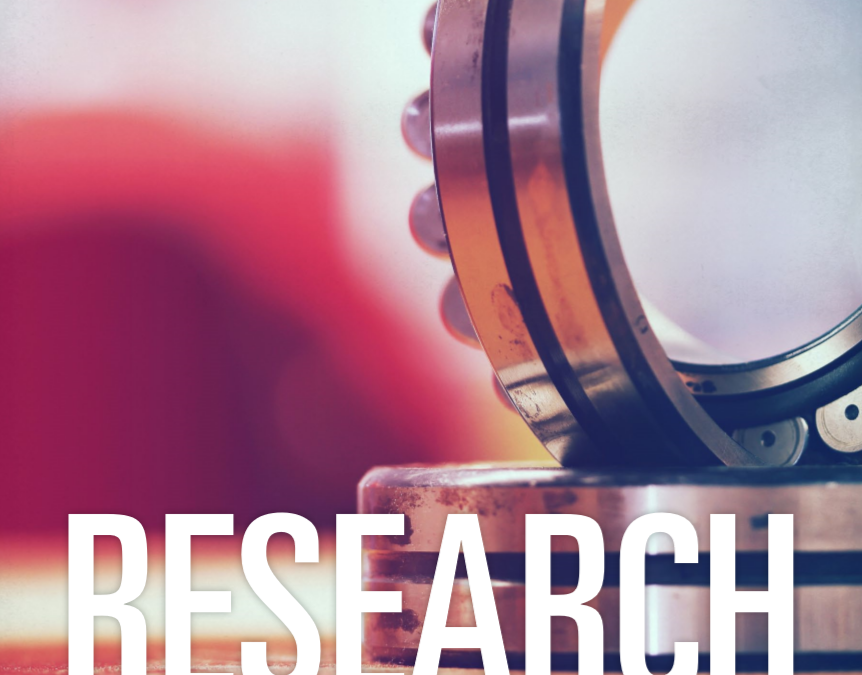Research lines
Research in a technology centre such as CARTIF, emerges from the necessity of improving the processes of production, diffusion and use of scientific and technological knowledge. A technology centre within the system sciencetechnology-society has to acquire a dual role: on the one hand, transferring the latest developments to companies, and on the other, acting as a producer of ideas and knowledge that may give way to new developments.
Besides incorporating various research lines throughout the last 20 years, CARTIF has a Research Plan to guide its researchers from the production of new knowledge, to its management, use, commercial exploitation and diffusion. The work organization in the Centre has been planned traditionally into units of work called Divisions. Part of the success of the projects developed is due to the transversality of knowledge of these Divisions and to how the various research lines interact to offer the customer a comprehensive service
Research lines
The Information and Communications Technology (ICT) Division relies on a settled line of research included in the “Intelligent Knowledge-based Systems.” Within this field, the Division elaborates and applies the investigation to problems in the social sphere, industrial environment and services with the objective of obtaining technological, economic and socially viable solutions with a significant added value. Throughout the last 20 years, the main areas of application of this line of investigation have been the intelligent conservation and maintenance of infrastructure; human and social factors: eInclusion, eTraining, Ambient Assisted Living; and document management through incoherence detection and management.
This research activity has determined diverse projects. Standing out among them, the CIBIC project meant an improvement in the services that companies of conservation of infrastructure provide. This is based on the application of new technologies to perform the concept of computational intelligence, in order to help enhance the quality and innovation of these services. As for the OPTIRAIL project, its main objective is to develop an intelligent framework based on knowledge that helps optimize as much the operations of railway maintenance as the process of decision making on this maintenance in the European Union.
As for the Robotics and Computer Vision Division, it has been performing an intense work of research, supported by a significant number of research projects and agreements as well as scientific publications.
Researchers work on three research lines: Industrial and Service Robotics, recognition of shapes and textures and 3D-Color digitalization.
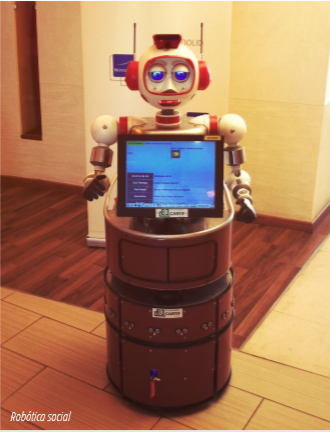
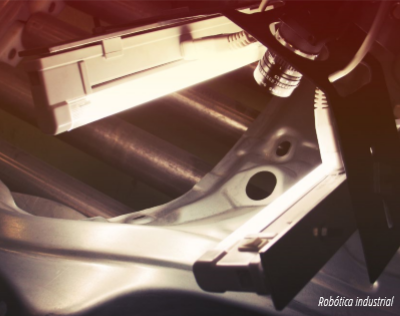
Industrial Robotics allows the integration of sensors and custom-fitted actuators (embedded, joined or external) and acquisition systems for monitoring and control, line that combines with the recognition of shapes applied to a quality control in the agri-food and manufacturing industry.
As for Social Robotics, it has resulted in the development of robots for transport of goods in industrial and service sectors, as well as inspection, cleaning, and specific robots. Besides, another line of robots with the ability of social interaction is being currently worked on, with features such as speech recognition, facial recognition, dialog management, and speech emotion recognition, which can also provide services to people.
The lines of recognition of shapes and digitalization are used in the infrastructure, construction, and the artistic heritage sectors, as they allow the development of infrastructure inspection systems for civil and railway engineering (roads, tunnels, bridges). Subsequently, their digitalization and the deformation analyses are performed, along with the monitoring of the damaging process. Besides, this line works on the quantitative characterization and automatic extraction of blueprints, the immersion in graphic environments, virtual or augmented reality and the production of computerized catalogs for documentation, diagnosis, intervention and diffusion.
Among the projects performed by this Division’s research staff, one of the most emblematic is “Service robots with interaction capacity. Validation through large periods in the hotel area.” In this project, a social robot named “Sacarino” has been developed to perform the role of a bellhop in a hotel. After years of investigation, it is already in the process of being introduced to the market.
The Food and Agriculture and Sustainable Processes Division comprises the majority of the staff in CARTIF, and addresses the investigation taking into account the principles of Circular Economy. That is why among its six lines of investigation there is the extraction and purification of natural compounds and inclusion on the matrix of products with higher added value (from the agri-food, cosmetic and/or pharmaceutical sectors, working on the design of the extraction process until it is scaled up in the pilot plant), and the application of processes and biotechnological tools into the agri-food industry. The DIANA project exemplifies the first of these lines when obtaining healthy food products from new formulations of natural antioxidants, while the VALORPLUS project, included in the KBBE program, and resulting from our work in the second line, bets on the development of integrated closed-cycle biorefineries, making a complete use of biomass, minimizing waste production and generating the highest possible value from the available resources.
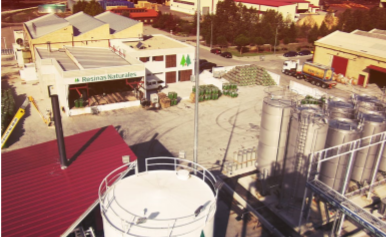
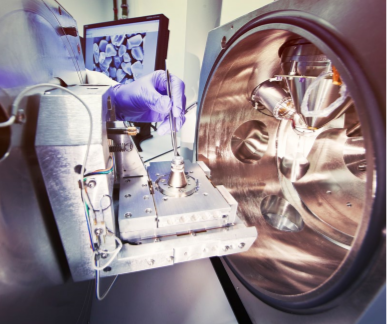
The project “Extraction of 2nd generation biofuel through the application of co-gasification; Biorefineries based on thermochemical principles,” from the PID Program, would make a good example of the performance within the line of development of co-gasification technology, pyrolysis and roasting for their industrial application.
There are three more lines in the environmental sphere. First, the energetic evaluation and waste material and derivatives, which covers the treatment from a physical perspective (separation processes, micronization, thermoforming, additivation), chemical (solvolysis, cracking, thermolysis) and biological (biomethanation of organic waste).
Second, the line of advance technologies on the treatment of effluents, which studies systems of filtration, including the elimination of emerging contaminants such as endocrine disruptors, as well as the recovery of products of high added value in the biotechnological sector. The TECOAGUA project evaluated technologies that could lower THMs below legally established levels in the water for human consumption that the water purification plants provide.
Finally, the line of development of products and formulations to apply in urban environments towards the elimination of gas pollution has been working on the sensing of contamination and the methods to add TiO2 in materials such as mortar, paint or asphalt pavements, and its functioning in action. Two patents resulted from this line: a device that monitors air quality and a photocatalytic formulation for the treatment of asphalt that eradicates contamination produced by traffic.
In the Automation and Industrial Control Division, the research lines are directed towards an improvement in the efficiency of the processes and an increase in the productivity of factories. In the most traditional scope of the Predictive Maintenance and Industrial Diagnosis, diagnostics algorithms have been developed or adapted based on spectral analysis, physical models or artificial intelligence applying them to specific problems. Using them along with statistical and mathematical methods to detect changes in signs, it is possible to predict the future development of the detected errors. On the other hand, investigation in the Optimal Control of Industrial Processes aims for the precise functioning in the lines of production that accomplishes an agreement between the various requirements, often conflicting, that take control in the process. Some methods have been developed and applied in this field for the energetic optimization or the improvement of performance so as to reach the defined operational marks. Among the latest research lines, there is the Machine Learning, Expert Systems and Data Science Techniques. These are transversal tools that may be applied to various Big Data issues in the industrial sphere. The methods that have been developed these past years include tools for the classification of faults from the measured data, the adjustment of functioning models and decision making. Also, these methods can be used for the prediction of human behavior.
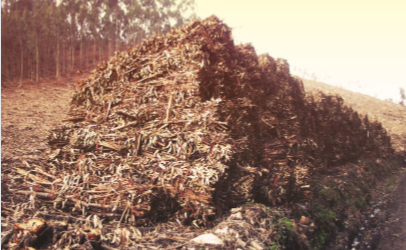

These research lines and others developed in the Automation Division have been applied to numerous projects, thereupon allowing their validation in the industrial environment. For instance, the LASHARE and CLET projects have developed new methods to monitor quality in laser welding. CARTIF has developed a predictive maintenance system for electric engines of variable speed, applied in this case to ventilation systems, and installed at the paint area in the Renault factory in Valladolid. The machine learning techniques have been used in the maintenance of suburban trains, developing a decision-making system to predict breakdowns and generate optimal maintenance plans automatically.
The Mechanical Engineering Division relies on competences of experimentation and simulation of the mechanical and structural behavior in the different machine materials and components. Even though simple analyses are enough to cover most of the design needs and prototyping can be, some cases require more sophisticated calculations. Among them, material nonlinearity stands out due to the lamination of metals, the structural damage or the mechanical fatigue. Material nonlinearity has been the target of various research projects with notable scientific and technical productivity.
Likewise, some methodologies have been proposed to cover geometric nonlinearity due to issues of local contact and large distances. Precisely, following the actual disposition to use materials with a better performance, it has become necessary to consider aspects which traditionally did not determine design. There is a new need to implement systems to add structural damping in order to restrict vibratory movements of big structures such as industrial chimneys, solar trackers, wind turbines or pedestrian bridges. It is important to be aware of the big oscillations that these structures suffer due to indeterminate actions (turbulent air, pedestrian transit). For this, one turns to systematic formulations of structural and fluid mechanics models, something that requires high computational abilities. In this regard, CARTIF has actively cooperated with research groups from other national universities (UCLM, UPM) and foreign (Sheffield and Warwick, UK). This cooperation consisted in long stays by the research staff, obtaining PhDs with European mention and joint participation in the organization of conferences such as the recent 6WCSCM, on monitoring and structural control.
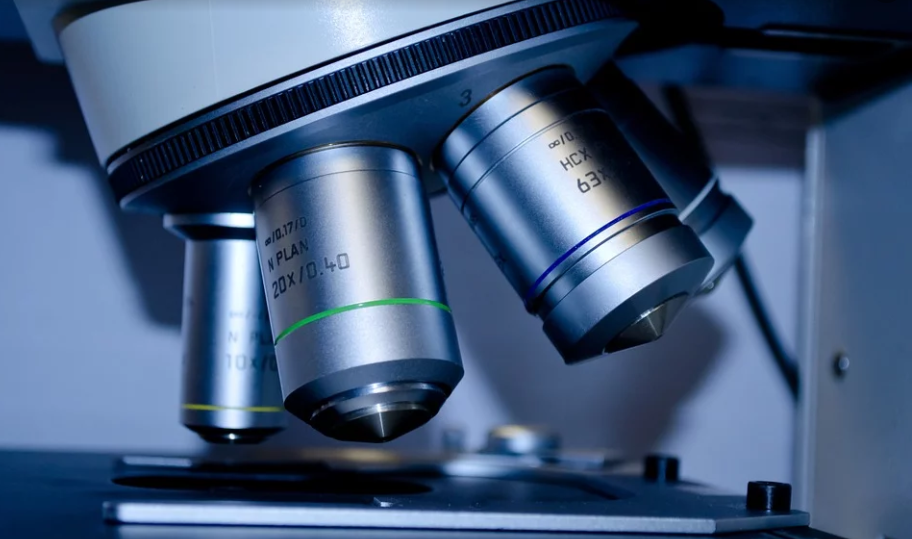
In collaboration with the Clinical Hospital of Valladolid and based on computational simulations, another research line has developed a multiscale model that allows the prediction, with enough precision to be clinically relevant, of the risk of disruption of abdominal aortic aneurysm upon personalized bases of the patient. Through biomechanical factors, one can formulate the socalled Risk Measure, expected to be applied as a tool for medical decision making. The previous activities take part in the field of mechanical engineer, having interconnections with other branches of engineering such as automation, control and information technology or medicine. In this regard, as a result from the multidisciplinary work, new low-cost monitoring systems have been implemented, and new patents on electromagnetic devices have been registered.
The Biomedical Engineering Division suggests an approach called “Integrated Health Technologies,” whose objective lies in the development of methods, technologies and health solutions that allow the application of robot systems in direct interaction with a human being, taking into account the physiological state of the individual and being capable of handling high quantities of data, information and knowledge (through its capture or interaction with external systems) with the reliability, security and efficiency needed in this field.
The work is focused on two areas: one is the development of technology for the treatment of chronic patients and the other is robotics applied to health. The first line means one of the big challenges in Europe currently: population ageing. The actions suggested to ease this problem are bidirectional: one is directed towards the development of integrated and innovative socialsanitary management models, and the other is to build the technology to support these new models.
In CARTIF, research has specialized in the use of international standards of interoperability in information systems in health care environments; said standards are those that allow multiple information systems, applications in the patient’s permanent residence, health centre, hospital or other health service providers to be able to show and understand the information that they share. This has not been resolved at a technological level and still remains a hot line of investigation.
The second line works on the development and evolution of robotics applied to rehabilitation. Physiobot is a Cartesian robot with haptic control, whose task is to stimulate neuroplasticity in patients who have suffered a cerebrovascular accident (CVA), using games and applying the “Assist as needed” paradigm (complementing movement assisting according to the specific needs). In addition to the technological development, we are collaborating with Brain Damage Units for a clinical validation, with interesting preliminary results.
The Energy Division started focusing its investigation on the development of wind prediction tools. Our teams have developed techniques for the energy prediction in wind farms, relying on in-situ measures and meteorological variables with a short-term forecasting horizon (from 8-24 hours in isolated networks, and 24-48 hours in inter-connected networks).
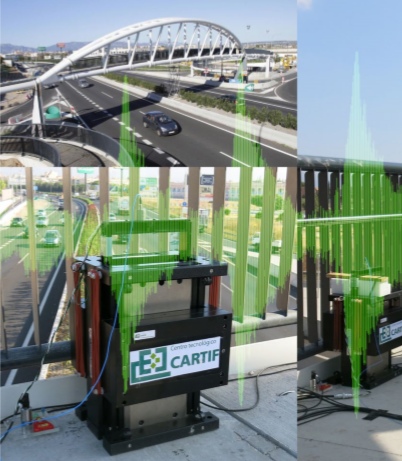

Another supplementary line was the Interaction of wind energy with the electrical grid and the accumulation in hydrogen. Drawing from the study of the impact that wind technology has within the electrical grid (on a quality level and discontinuity of output power level), systems have been designed based on fuel cells and electrolysers so as to improve its management, assuming the power variations of wind farms. Therefore, through a parallel operation, the network provider has to see in the combination wind generation-fuel cells a flexible system facing the demand variations.
The Systems of remote management and control line is based on the remote management of installations of any nature in order to improve their reliability and minimize maintenance expenses. If we are talking about buildings, the aim is to ensure comfort and minimize energy expenses.
The Cooling through renewable sources line works on the integration of alternative air conditioning systems in buildings, using jointly solar thermal energy and photovoltaic energy, geothermal energy and cooling through absorption refrigerators.
The BaaS project is the best example on the line of Home control and automation, and creation of intelligent systems. It seeks the optimization of energy yield within the application domain of non-residential buildings, during their operating stage. The Baas system encompasses a data management system, a platform of middleware systems, predictive energy models and service control, and APO services (advanced planning and optimization).
Finally, one of the most successful lines of investigation within the Division and CARTIF is that of Energy efficiency in buildings and districts. SMART CITIES. Through the projects underway, a new model of a comprehensive and sustainable urban regeneration is under development. This model lies in the urban implementation of innovative technological solutions into the energy, transport and ICT sectors, for the purpose of accelerating the transformation of the European cities into intelligent urban areas towards social progress and environmental recovery, as well as catchment areas and those that contribute to economic growth. The DIRECTION, R2CITIES, CITyFiED and REMOURBAN projects are the best current examples of the work performed in this line.
Scientific contributions
The development of these research lines, at a scientific level, has been recorded in prestigious national and international publications, of which more than a half belong to magazines indexed in JCR-SCI (Journal Citation Reports). The complete list can be consulted from the CARTIF website.
Besides, the Centre keeps alliances with academic and research institutions from all over the world, and their researchers participate in the international congresses of reference in their subjects of research.


